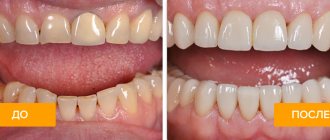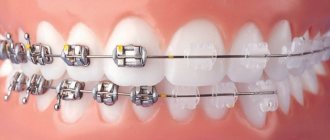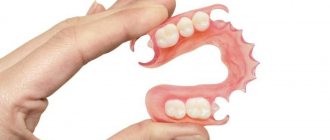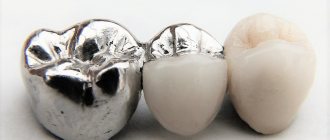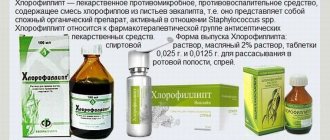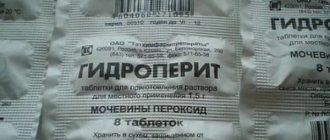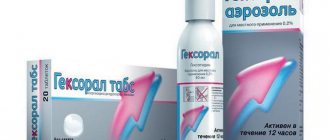When faced with the problem of childhood stomatitis: the appearance of painful sensations on the tongue and oral mucosa, white plaque and red ulcers when trying to remove white deposits, many parents think about whether it is worth using vinylin or Shostakovsky balm when treating the oral mucosa in a child.
What is the principle of action of the drug and its side effects? What are the benefits of using vinylin? What methods of use exist in childhood?
To whom, how much and how to give vinylin? How much does the drug cost in retail? We will consider all these questions in the article and determine whether the medicine can be used to treat stomatitis and how to use it.
Analogs
There is no exact analogue of the balm. The following drugs have the same properties:
- Hydrogen peroxide. A strong antiseptic, used to remove dirt and pus from wounds. Is an antioxidant. When treating wounds, foam is formed that closes the vessels and stops bleeding. Used to remove pathogenic microflora from mucous membranes.
- Elekasol. This is a herbal mixture consisting of licorice, chamomile, sage and other plants. Like Shostakovsky's balm, it has an antimicrobial effect and relieves inflammation and tissue swelling well. Used for the treatment of dental, urological, gynecological diseases.
- Iodoform. The powder is used externally only. Wound surfaces are treated; if necessary, the product is diluted for better penetration into closed areas.
- Naftaderm. The ointment is made from naphthalan oil. It is an antiseptic, has a resolving effect, and is used externally. Relieves inflammation, softens tissues.
Other analogues are Methylene blue, Potassium permanganate, Hexicon, Septifril, Pantocid.
The balm is sold without a prescription. The cost of the drug Vinilin is from 100 rubles per 50 ml.
Composition and release form
You can find “Polivinox” on sale, packaged in capsules, as well as bottled in containers (flask, bottle) made of dark-colored glass. Container capacity - 50, 100 g, 1 g of liquid contains 1 g of polyvinyl butyl ether. Another name for the active substance is polyvinox. There are no auxiliary components in the drug.
| Name | Tara | Material | Volume |
| Balm (“Polivinox”) | Bottle | Dark glass | 100 g |
| Balm (“Polivinox”) | Bottle | Dark glass | 50 g |
| "Vinilin" | Bottle | Dark glass | 100 ml |
| "Vinilin" | Bottle | Dark glass | 180 ml |
Upon contact, “Vinilin” has three types of therapeutic effects on mucous tissues:
- epithelializing;
- antimicrobial;
- anti-inflammatory.
The main component of the drug is polyvinox. The active substance is characterized by antimicrobial activity. The bacteriostatic effect of Vinilin first slows down and then completely interrupts the vital activity of pathogenic microflora.
When Vinilin is applied externally, the child’s pain in the throat decreases. The product coats the inflamed mucous membranes of the throat well, this promotes active regeneration processes that begin in the tissues, this leads to a reduction in inflammation.
Terms of sale
Vinilin balm is sold freely; a prescription is not required to purchase it. Despite this, treatment of a child should begin only after examination by a doctor. It is necessary to stop using ether at the slightest allergy symptoms.
You can purchase the medicine in any Russian city. The price of the drug in bottles weighing 50 g can fluctuate in the range of 44-200 rubles, packages of larger volume (100 g) cost in the range of 50-100 rubles.
Instructions for use
Rectal, external and internal use of Vinilin is indicated. Let's consider the basic rules for using the balm for various pathologies.
Externally
According to the instructions for use, Vinilin can be used in pure form or in 20% solutions obtained from substances in which the balm is dissolved. The product is applied to the wound or soaked in gauze pads and applied to the skin.
The surface can be covered for better absorption of the balm. The procedure is carried out 1-2 times a day, closing the wound for 1 hour.
For mastitis, fabric soaked in Vinylin is applied to the seals on the mammary gland and fixed.
For the mucous membranes of the mouth
For stomatitis or other lesions of the oral mucosa, soak a cotton swab on a stick in Vinilin and apply the product to the erosion. This method is used when minor areas of mucous membranes are affected.
Another way to use it for large areas of ulcers is to rinse with the prepared solution. You should treat your mouth 3-4 times a day. In this case, the composition can be swallowed. After application, a protective film is formed on the surface of the mucous membrane, protecting against irritation and accelerating healing.
For children, erosions with stomatitis are carefully lubricated, keeping them from drinking and eating for 1-2 hours
Gastrointestinal pathologies
To treat the mucous membranes of the digestive tract, it is necessary to wait for the maximum emptying of the stomach and ensure prolonged contact with the medicine. Therefore, Shostakovsky balm is taken 5 hours after meals (dinner) at night. On the first day of therapy, the volume of Vinilin is 1 teaspoon. Further:
- For gastritis with increased production of gastric juice, take a dessert spoon of balm every other day for 10-14 days.
- For ulcerative processes of the gastrointestinal tract - 1 dessert spoon per day for 2-3 weeks.
After using the balm, do not eat.
Rectally
External hemorrhoids or anal fissures are simply lubricated with balm or gauze napkins soaked in the product are applied. After applying Vinilin, you need to lie down for 20 minutes.
The drug is applied 3-4 times a day. The entire course lasts from a week to two.
For rectal insertion, a rectoscope or rubber bulb is used. Before administration, the intestines should be emptied. Vinyl should be slightly heated to a warm state, the volume should be at least 25 ml.
The balm helps well with non-advanced hemorrhoids. If the dynamics are positive, the course is completed, and after a week's break the treatment is repeated.
For frequent exacerbations, the balm is also used prophylactically in non-acute periods - once a day at night. The course is a week.
The same therapeutic actions are carried out for dysentery to reduce inflammation of the rectum.
Analogues and price of the drug
The drug "Vinilin" has practically no analogues. There are only synonymous drugs that also contain polyvinox as an active ingredient. Such medications include Shostakovsky balm, Polivinox and Polivinin-Rusfar. These drugs can be used as a replacement for the original medicine without prior consultation with a doctor, since they have the same indications, contraindications and side effects.
As for the price, for the drug “Vinilin” it can be different and depends on the volume of the bottle. On average, 50 ml of balm is sold for 200 Russian rubles, and 100 ml - for 290-300 rubles.
Price
The product can be successfully purchased retail at a pharmacy; its price in most cases depends on the size of the package and the specific markup of the commercial organization. Despite this, the medicine is inexpensive and accessible.
A solution of vinylin 50 ml costs from 150 rubles per bottle, the price of the balm is not much different, the drug can be found for 200 rubles. The online offer will cost a little less - 150 rubles per bottle.
A large package of the drug with a volume of 100 ml will cost a little more - 250 rubles.
The drug vinylin is an effective remedy for eliminating the symptoms of stomatitis in children, recommended for use by pediatricians.
Its use requires caution; Compliance with the dosages specified by the doctor and consistent use of the drug in combination with antifungal, antiviral or antibacterial agents will lead to a positive result and will help avoid relapses.
More complete information about the treatment of stomatitis in children is given in the following video:
Description
Vinilin is used as an antiseptic for sore throats. The balm has a thick and viscous consistency. The medicine is light yellow in color and has a specific odor. The balm is sold in dark glass bottles.
The specificity of the drug is that it does not dissolve in water, but it does not dissolve in oil and alcohol. “Viniline” is also called “Shostakovsky’s Balm”. It acts as a medicine, reduces inflammatory processes, kills microbes, prevents them from actively spreading, cleans abrasions, ulcers, cuts, promotes their healing, and envelops the mucous membrane.
Vinilin has a bacteriostatic effect. The balm is sold in capsules and jars of 100 milliliters. "Vinilin" is a medicine that also has an anti-inflammatory effect. Promotes tissue regeneration, epithelization, stimulates wound healing, cleanses the skin of suppuration. After using it, the stitches heal faster and the scars become less noticeable.
Description of the drug
“Vinilin” helps reduce sore throat with sore throat, it has a pronounced antiseptic effect, successfully fights pathogenic microorganisms, relieves inflammation, and coats damaged areas of mucous tissue.
Many people know the medicine under the names Shostakovsky balm or “Polivinox”. In the medical environment, it can be classified as polyvinylbutyl ether. The drug can be used as a local anesthetic.
The liquid preparation has a characteristic odor, it has a thick, viscous consistency, the color of the viscous mass is yellow. The balm does not come into contact with water at all; it interacts only with alcohol, oils, chloroform, ether (ethyl, isoamyl). The substance does not thicken in air.
Instructions for use of Vinilin
Indications for use
- Carbuncles;
- boils;
- purulent wounds of soft tissues;
- trophic ulcers;
- burns;
- frostbite;
- dermatitis (inflammatory skin diseases);
- strepto-staphyloderma (pustular skin diseases);
- scabies;
- mastitis (purulent inflammation of the mammary gland);
- post-radiation lesions (for cancer);
- haemorrhoids;
- stomatitis (inflammation of the oral mucosa);
- gingivitis (inflammation of the gums);
- glossitis (inflammation of the mucous membrane of the tongue);
- periodontal disease (damage to periodontal tissue);
- irritation of the oral mucosa when using removable dentures;
- leukoplakia (damage to the mucous membrane of the cervix);
- dysentery;
- ulcerative colitis;
- anal fissures (fissures in the anus due to prolonged constipation);
- erosive gastritis;
- Crohn's disease;
- hyperacid gastritis (with high acidity);
- peptic ulcer of the stomach and duodenum;
- erosive gastritis.
Contraindications
Vinylin is not prescribed:
- during pregnancy and breastfeeding;
- in childhood (contraindicated for internal use);
- in case of individual intolerance to Vinilin or its components;
- for kidney diseases;
- for diseases of the liver and gall bladder.
Side effects
If you follow the dosages prescribed by your doctor, there are no side effects.
In case of an overdose of the drug, an allergic reaction may occur in the form of redness, itching or rashes in the form of hives.
Treatment with Vinilin
How to use Vinilin?
Vinylin can be used externally and internally.
For external use
Vinylin is applied to a napkin or directly to the surface of the wound in sufficient quantity.
For external use, Vinilin can be used both in pure form and in the form of a 20% solution in any vegetable oil (sea buckthorn oil, rosehip oil and others) and in the form of an ointment (compatible with other ointments, pastes, creams).
Inside
Vinyline can be taken as a balm (undiluted) 5-6 hours after a light dinner.
Vinyline can also be administered through a proctoscope.
(a special apparatus for examining the large intestine) or with a syringe through a rectal rubber tube (for microenemas).
It can be inserted into the rectum using a rubber bulb
.
In the form of a therapeutic enema, either pure Vinylin or diluted in half with fish oil is administered.
Dosage of Vinilin when taken orally .
1 teaspoon of balm is prescribed on the first day, all subsequent days - 1 dessert spoon 1 time per day; the course of treatment is 15-20 days (for peptic ulcers) or 10-12 days (for severe heartburn or gastritis with increased secretion).
Through a rectoscope
25-40 ml of Vinilin are administered; for microenemas – 15-30 ml; course of treatment up to 10 days; in therapeutic enemas, up to 100 ml (pure Vinilin or with fish oil) is administered 2 times a week for 3-4 weeks.
Indications and contraindications
According to the instructions for use of vinylin, the drug is recommended for local therapy in the following cases :
- when a child has a sore throat, stomatitis, gingivitis and other bacterial, fungal and viral diseases of the oral cavity;
- when children developed dysentery, leukoplakia, and periodontal disease.
Vinylin is mainly used in symptomatic treatment: to eliminate ulcers, aphthae on the surface of the mucous membrane of the lips, palate, tongue and cheeks.
For adults, vinylin is used topically to relieve inflammation:
- for hemorrhoids, colitis, anal fissures, inflammation when wearing dentures and the above diseases, which are typical not only for children, but also for older people.
Thanks to the enveloping and soothing function of vinylin, which relieves irritation of the mucous membrane, the drug is used as part of complex therapy in the treatment of gastrointestinal diseases such as:
- stomach and duodenal ulcers;
- Crohn's disease;
- for the following types of gastritis: erosive, chronic with increased acidity of gastric juice, hyperacid.
External use of vinylin is justified:
- with necrotic lesions of the skin, which include boils and carbuncles;
- for frostbite and burns, vinylin is used as first aid and as part of complex therapy, applying balm to the affected areas;
- in rehabilitation therapy after irradiation of cancerous formations, various dermatitis;
- when treating skin affected by scabies mites, mastitis.
Contraindications to taking vinylin are:
- individual intolerance to the drug, allergic reactions to polyvinox in the composition;
- for kidney and liver diseases;
- for diseases of the gallbladder.
We will talk about the causes and methods of removing bottle caries in children in our next article. And here you can read about at what age it is possible to painlessly trim the frenulum under the tongue.
Internal use of the drug is not recommended for children under 14 years of age, as well as lactating and pregnant women due to the risk of exposure to the fetus.
Internal use is dangerous for children! The drug affects the fragile urinary system, bile excretion, and gastrointestinal tract.
Since the drug leads to a decrease in the acidity of gastric juice and a decrease in the secretory function of the stomach, this can lead to gastritis, colitis and other pathologies.
Vinylin
Vinylin instructions
Vinilin is a domestic antiseptic. It has anti-inflammatory, antibacterial, enveloping and regenerating effects. Promotes disinfection of wounds, restoration of tissue integrity, formation of epithelium in places of damage to the skin. Experiments on the synthesis of vinyl esters began back in 1888. Vinilin himself was created by M.F. Shostakovsky in 1941, during the war, when the country experienced an urgent need for anti-inflammatory, antipyretic and anti-burn drugs. The drug, which is also called Shostakovsky’s Balm, is still in use today. It is used for local purulent inflammation of the skin, trophic ulcers, inflammation of the mammary gland, soft tissue damage, temperature damage to the skin (burns, frostbite). Vinilin is used orally for ulcerative-erosive lesions of the stomach and duodenum, inflammation of the mucous membrane of the stomach and large intestine. The drug occupies a special place in solving the problem of burn injuries. A burn wound has a very specific healing process, which determines the tactics of their treatment: local therapy, measures to quickly close the surface of the wound to prevent bacterial contamination and intoxication, activation of epithelium formation on the wound surface
The following requirements are put forward for drugs used to treat burn wounds: bactericidal properties, absence of negative effects on cells and tissues, stability of action upon contact with living tissues, non-volatility, convenience and ease of use (important when providing emergency care). In recent years, many new drugs have appeared for the treatment of burn wounds, however, the high number of allergic reactions and the emergence of antibiotic-resistant strains force one to turn to proven drugs, the clinical effectiveness of which has long been known and is beyond doubt.
One such medicine is Vinilin. It ensures wound healing without complications. In terms of bactericidal activity, Vinilin is somewhat inferior to Levomekol, but is superior to this drug in the speed of wound healing. In addition, dressings with Vinilin can be changed less often than with Levomekol. Vinilin provides brighter and more even granulations and less painful dressing changes. When using Vinilin, wound healing occurs, as a rule, without peripheral inflammation. Due to the elasticity of the bandage, pain is usually less severe than with other medications. A characteristic feature of the drug is a slight burning sensation under the bandage, which lasts about 15-20 minutes after the first application. Vinilin has a specific odor, to which patients quickly get used to, and the deodorizing effect of the drug subsequently becomes even pleasant. Vinylin can be applied to the skin using sterile medical wipes, or directly to the skin directly from the bottle. It is planned to release Vinilin in the form of an aerosol, which will minimize losses when directly applying the drug to the skin and eliminate the inconvenience of its distribution over the skin. The frequency of use of the drug is 3-5 times a day. Undesirable side effects are allergic reactions in the form of skin rashes. Contraindications for use are individual intolerance to the components of the drug, as well as pregnancy and lactation (for oral administration only).
Indications
Vinylin is used:
- If the skin or soft tissue becomes infected, for example with a boil or abscess.
- For trophic skin ulcers.
- For dermatitis.
- For various injuries (for example, abrasions and bruises).
- For open wounds on the skin.
- From diaper rash.
- For chemical or thermal burns.
- For post-traumatic infection.
- For anal fissure and hemorrhoids.
- For chickenpox (to treat blisters in the mouth).
- With frostbite.
- For sore throat, granulosa pharyngitis and other infections of the throat and tonsils.
- For stomatitis, gingivitis, glossitis and other lesions of the oral mucosa.
The medicine is taken orally for high acidity and heartburn (erosive or hyperacid gastritis), peptic ulcer or ulcerative colitis. Comprehensive treatment of such diseases is necessary. The solution injected using a rectoscope is used for colitis and dysentery.
Indications for use
For children with sore throat and sore throat, Vinilin is prescribed as an adjuvant in addition to the main drug therapy. Action of the drug:
- accelerates tissue regeneration;
- fights bacteria;
- relieves pain.
Reviews about the treatment with Vinilin are positive. The medicine shows good results for pharyngitis.
The balm is especially effective if it is used as an element of complex therapy, as an addition to antibiotics.
Contraindications and side effects
The manufacturer does not guarantee the complete absence of side effects from the use of Vinilin. The reasons for their appearance in most cases are associated with incorrect dosage of the medicine. The annotation for the medicine states that it is not recommended for children. However, medical practitioners note the positive effect of the balm on babies. In case of an overdose, a child may develop consequences in the form of allergic skin rashes:
- the skin turns red;
- itches;
- rashes appear.
Such side effects are typical for children who are intolerant to the medicinal components included in the drug. Allergies are manifested by dermatological changes. In addition to itching and redness, the child may experience swelling.
No other adverse reactions were detected with the balm. The active substance does not penetrate tissue cells and does not have a toxic effect on the body. There is a list of pathologies for which Vinilin is not recommended:
- kidney disease;
- liver pathologies;
- gallbladder diseases.
Release forms
| Dosage | Packing | Storage | Sale | Best before date |
50; 100
Short description
Vinilin is a domestic antiseptic. It has anti-inflammatory, antibacterial, enveloping and regenerating effects. Promotes disinfection of wounds, restoration of tissue integrity, formation of epithelium in places of damage to the skin. Experiments on the synthesis of vinyl esters began back in 1888. Vinilin himself was created by M.F. Shostakovsky in 1941, during the war, when the country experienced an urgent need for anti-inflammatory, antipyretic and anti-burn drugs. The drug, which is also called Shostakovsky’s Balm, is still in use today. It is used for local purulent inflammation of the skin, trophic ulcers, inflammation of the mammary gland, soft tissue damage, temperature damage to the skin (burns, frostbite). Vinilin is used orally for ulcerative-erosive lesions of the stomach and duodenum, inflammation of the mucous membrane of the stomach and large intestine. The drug occupies a special place in solving the problem of burn injuries. A burn wound has a very specific healing process, which determines the tactics of their treatment: local therapy, measures to quickly close the surface of the wound to prevent bacterial contamination and intoxication, activation of epithelium formation on the wound surface
The following requirements are put forward for drugs used to treat burn wounds: bactericidal properties, absence of negative effects on cells and tissues, stability of action upon contact with living tissues, non-volatility, convenience and ease of use (important when providing emergency care). In recent years, many new drugs have appeared for the treatment of burn wounds, however, the high number of allergic reactions and the emergence of antibiotic-resistant strains force one to turn to proven drugs, the clinical effectiveness of which has long been known and is beyond doubt.
One such medicine is Vinilin. It ensures wound healing without complications. In terms of bactericidal activity, Vinilin is somewhat inferior to Levomekol, but is superior to this drug in the speed of wound healing. In addition, dressings with Vinilin can be changed less often than with Levomekol. Vinilin provides brighter and more even granulations and less painful dressing changes. When using Vinilin, wound healing occurs, as a rule, without peripheral inflammation. Due to the elasticity of the bandage, pain is usually less severe than with other medications. A characteristic feature of the drug is a slight burning sensation under the bandage, which lasts about 15-20 minutes after the first application. Vinilin has a specific odor, to which patients quickly get used to, and the deodorizing effect of the drug subsequently becomes even pleasant. Vinylin can be applied to the skin using sterile medical wipes, or directly to the skin directly from the bottle. It is planned to release Vinilin in the form of an aerosol, which will minimize losses when directly applying the drug to the skin and eliminate the inconvenience of its distribution over the skin. The frequency of use of the drug is 3-5 times a day. Undesirable side effects are allergic reactions in the form of skin rashes. Contraindications for use are individual intolerance to the components of the drug, as well as pregnancy and lactation (for oral administration only).
Pharmacology
A product that improves tissue regeneration with an anti-inflammatory effect. It also has an antimicrobial, local anti-inflammatory and enveloping effect.
When used externally, it promotes wound cleansing, epithelization, and tissue regeneration.
Release form
| Balm | 1 fl. |
| polyvinox | 100 % |
50 g - bottles (1) - cardboard packs. 100 g - bottles (1) - cardboard packs. 50 g - bottles (50) - cardboard boxes. 100 g - bottles (50) - cardboard boxes.
Dosage
Apply externally by wetting wipes or applying directly to the wound surface.
When taken orally, a single dose is 1.4 g, frequency of administration is 3-5 times a day.
Indications
For external use: boils, carbuncles, trophic ulcers, purulent wounds, mastitis, soft tissue injuries, burns, frostbite, inflammatory skin diseases.
For oral administration: peptic ulcer of the stomach and duodenum, gastritis, colitis.
Instructions for use of Vinilin
Side effects
If you follow the dosages prescribed by your doctor, there are no side effects.
In case of an overdose of the drug, an allergic reaction may occur in the form of redness, itching or rashes in the form of hives.
Treatment with Vinilin
How to use Vinilin?
Vinylin can be used externally and internally.
For external use
Vinylin is applied to a napkin or directly to the surface of the wound in sufficient quantity.
For external use, Vinilin can be used both in pure form and in the form of a 20% solution in any vegetable oil (sea buckthorn oil, rosehip oil and others) and in the form of an ointment (compatible with other ointments, pastes, creams).
Inside
Vinyline can be taken as a balm (undiluted) 5-6 hours after a light dinner.
Vinyline can also be administered through a proctoscope.
(a special apparatus for examining the large intestine) or with a syringe through a rectal rubber tube (for microenemas).
It can be inserted into the rectum using a rubber bulb
.
In the form of a therapeutic enema, either pure Vinylin or diluted in half with fish oil is administered.
Dosage of Vinilin when taken
orally
: 1 teaspoon of balm is prescribed orally on the first day, all subsequent days - 1 dessert spoon 1 time per day; the course of treatment is 15-20 days (for peptic ulcers) or 10-12 days (for severe heartburn or gastritis with increased secretion).
Through a rectoscope
25-40 ml of Vinilin are administered; for microenemas – 15-30 ml; course of treatment up to 10 days; in therapeutic enemas, up to 100 ml (pure Vinilin or with fish oil) is administered 2 times a week for 3-4 weeks.
Best before date
The product is sold in pharmacies without a prescription. In accordance with the recommendations in the instructions, it must be stored at room temperature, with the lid tightly closed. This is the only way the shelf life of the medicine Vinilin reaches 5 years.
Vinilin is an indispensable antiseptic for the throat in the treatment of sore throat. It not only kills dangerous bacteria, but restores the mucous membrane, heals wounds and abrasions. We should not forget that the drug is not an independent medicine and is used only as an adjunct for the treatment of sore throat.
You need to keep Vinilin at home at a temperature below 25 degrees Celsius. The drug should be stored in a place hidden from children, and its bottle should always be tightly closed. The shelf life of the medicine is 5 years.
Vinilin has an antiseptic effect, helps cleanse wounds, delays the development and growth of pathogenic microbes, reduces pain, and has a wound-healing effect (promotes tissue regeneration and promotes the formation of a soft scar at the wound site).
ATX code: D03A X50. Antiseptic drugs.
Store in tightly sealed containers; capsules are stored in a dry place at a temperature not exceeding 30° C. Available without a prescription.
The shelf life of Vinilin is 5 years.
Store at room temperature. Keep away from children.
Five years.
Storage conditions and periods
At home, the drug should be stored for no more than 5 years. The room temperature should not exceed 25 °C. The first aid kit with the bottle should be kept in a place inaccessible to young children. The container must be sealed after each use.
When purchasing and using the drug for external use, check the expiration date. The manufacturer indicates the date of manufacture and period of use on the box. After the period has expired, the product is not used for medicinal purposes.
Effect of the balm
“Vinilin” for stomatitis is most effective in treating its infectious and traumatic forms. The drug helps to disinfect the mucous membranes of the mouth, preventing the entry of new harmful microorganisms into infected areas. In addition, Shostakovsky balm promotes epithelial regeneration and restoration of the oral mucosa, which significantly speeds up the healing process.
Balm in the treatment of stomatitis effectively helps relieve pain. Due to the fact that the balm is able to envelop the mucous membrane, it protects it from further damage. A similar effect appears on the gastric walls during gastritis and ulcers, which significantly reduces the risk of developing allergic stomatitis.
“Vinilin” for stomatitis in adults of infectious or traumatic origin is not used as an independent drug, but is part of complex therapy. It is recommended to combine it with rinsing the mouth with herbal infusions; this approach speeds up the healing process and improves the patient’s well-being. In addition to the fact that the balm cleanses and disinfects ulcers well, it also creates a film on the oral mucosa, protecting it from bacteria and relieving pain.
According to the instructions for Vinilin, for stomatitis its effect can be increased through the use of other medications, but the decision on the prescription must be made by the attending physician. For mild cases of the disease, Shostakovsky's balm can relieve stomatitis in combination with herbal rinses. In more severe forms, the drug requires supplementation with other drugs, in particular antibiotics.
Another important point is that stomatitis can be a symptom of another, more serious disease. Oral ulcers may indicate pathology of hormonal, immune and oncological diseases.
Benefits of use
For stomatitis, vinylin helps the body get rid of pathogenic flora in the mouth, preventing the proliferation of microbes and fungi.
By covering the mucous membrane with a protective film, the drug closes the gates to new infections through open wounds and ulcers. With its help, tissue healing processes occur faster.
Vinilin is an excellent antiseptic and enhances mucosal regeneration. In addition, it has an analgesic effect; with its help, pain is no longer felt so acutely while eating.
Thanks to such positive properties, this medicine helps prevent the occurrence of allergic reactions to fungal and bacterial infections.
Important! Vinilin is recommended for use as part of complex treatment. In combination with other drugs, the therapeutic effect of the drug will be greater.
The doctor selects the composition and dosage of other medications in accordance with the individual characteristics of the child and the stage of the disease.
For mild stomatitis, the doctor may prescribe rinsing with sage or chamomile, oak bark, soda rinsing in combination with applying vinylin to the child’s oral mucosa.
Instructions for use of vinylin
Short description
Vinilin is a domestic antiseptic. It has anti-inflammatory, antibacterial, enveloping and regenerating effects. Promotes disinfection of wounds, restoration of tissue integrity, formation of epithelium in places of damage to the skin. Experiments on the synthesis of vinyl esters began back in 1888. Vinilin himself was created by M.F. Shostakovsky in 1941, during the war, when the country experienced an urgent need for anti-inflammatory, antipyretic and anti-burn drugs. The drug, which is also called Shostakovsky’s Balm, is still in use today. It is used for local purulent inflammation of the skin, trophic ulcers, inflammation of the mammary gland, soft tissue damage, temperature damage to the skin (burns, frostbite). Vinilin is used orally for ulcerative-erosive lesions of the stomach and duodenum, inflammation of the mucous membrane of the stomach and large intestine. The drug occupies a special place in solving the problem of burn injuries. A burn wound has a very specific healing process, which determines the tactics of their treatment: local therapy, measures to quickly close the surface of the wound to prevent bacterial contamination and intoxication, activation of epithelium formation on the wound surface
The following requirements are put forward for drugs used to treat burn wounds: bactericidal properties, absence of negative effects on cells and tissues, stability of action upon contact with living tissues, non-volatility, convenience and ease of use (important when providing emergency care). In recent years, many new drugs have appeared for the treatment of burn wounds, however, the high number of allergic reactions and the emergence of antibiotic-resistant strains force one to turn to proven drugs, the clinical effectiveness of which has long been known and is beyond doubt.
One such medicine is Vinilin. It ensures wound healing without complications. In terms of bactericidal activity, Vinilin is somewhat inferior to Levomekol, but is superior to this drug in the speed of wound healing. In addition, dressings with Vinilin can be changed less often than with Levomekol. Vinilin provides brighter and more even granulations and less painful dressing changes. When using Vinilin, wound healing occurs, as a rule, without peripheral inflammation. Due to the elasticity of the bandage, pain is usually less severe than with other medications. A characteristic feature of the drug is a slight burning sensation under the bandage, which lasts about 15-20 minutes after the first application. Vinilin has a specific odor, to which patients quickly get used to, and the deodorizing effect of the drug subsequently becomes even pleasant. Vinylin can be applied to the skin using sterile medical wipes, or directly to the skin directly from the bottle. It is planned to release Vinilin in the form of an aerosol, which will minimize losses when directly applying the drug to the skin and eliminate the inconvenience of its distribution over the skin. The frequency of use of the drug is 3-5 times a day. Undesirable side effects are allergic reactions in the form of skin rashes. Contraindications for use are individual intolerance to the components of the drug, as well as pregnancy and lactation (for oral administration only).
Pharmacology
A product that improves tissue regeneration with an anti-inflammatory effect. It also has an antimicrobial, local anti-inflammatory and enveloping effect.
When used externally, it promotes wound cleansing, epithelization, and tissue regeneration.
Features of use in children
In childhood, doctors recommend using only a balm or solution for gargling. They have a wide spectrum of action, helping to quickly restore the health of the oral mucosa.
Use vinylin with caution, avoiding ingestion of the drug. If symptoms of an allergic reaction appear throughout the body or on the face, stop taking the medicine immediately.
Experts often prescribe vinylin to infants only in the form of local treatment of the oral mucosa. At the same time, a nursing mother should carefully monitor the condition of the child’s body.
In case of individual intolerance to the drug, even if the symptoms of stomatitis disappear, consult a doctor so that he can prescribe another drug that has the same spectrum of action and is safe for the child.
The simultaneous use of other drugs with vinylin is not contraindicated. So, doctors may even recommend alternating treatment of the oral cavity with herbal decoctions and vinylin, a soda solution and the drug.
You can also use various oils simultaneously with vinylin: rosehip, sea buckthorn.
What should parents do first if their child has black plaque on their teeth, and how to prevent this. By following this link: https://dentist-pro.ru/detskaya-stomatologiya/polost-rta/stomatit/kak-i-chem-lechit-molochnicu-vo-rtu-u-grudnichka-recepty-proverennye-vremenem.html , you will find information on how to treat oral thrush in a baby.
In this review, you will find out why a child may have a red spot on his tongue. This may be a symptom of a serious dental disease!
pharmachologic effect
What is the drug "Vinilin"? Instructions and reviews from doctors indicate that this is a medicinal product that has an antimicrobial, enveloping and anti-inflammatory effect. When used externally, the medication helps cleanse and heal ulcers and wounds.
The antimicrobial effect of the drug manifests itself in inhibiting the development and growth of bacteria. The healing effect of the drug is associated with regenerative and enveloping properties.
When using the balm, scars remaining after healing of wounds and ulcers remain soft and almost invisible. It should also be noted that the drug in question acts as a local anesthetic.
How does Vinilin balm work when taken orally? Reviews from experts say that this drug has enveloping, anti-inflammatory and bacteriostatic properties. In this regard, it is very often used to treat gastrointestinal diseases.
This medication has a specific pungent odor. It is insoluble in water, but mixes quite well with ethyl ether, liquid paraffin, oils, chloroform, butyl and isoamyl alcohols.
It should also be noted that the balm does not thicken in air and does not dry out.



